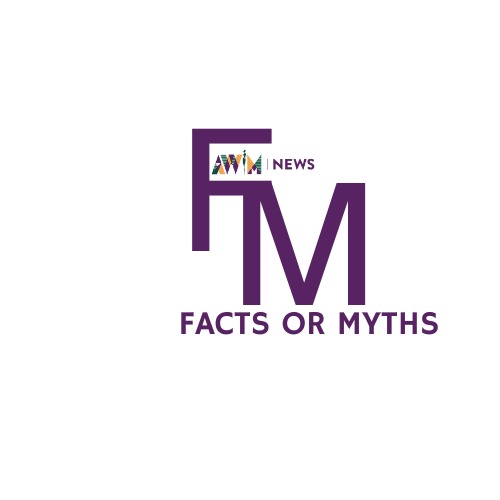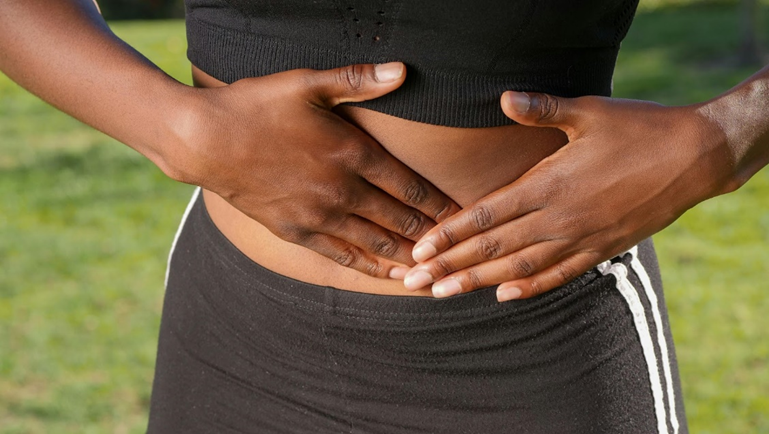Groundbreaking Workshop on AI and Technology-Facilitated Gender-Based Violence at AWiM24
Trending
Monday May 12, 2025
Trending


Many women experience various health concerns related to their reproductive systems during their monthly cycles. Common issues include cramps, acne, nausea, facial swelling, vomiting, and fever, amongst others. However, one symptom that stands out as particularly significant for a large number of women is menstrual cramps, which typically affect the lower abdomen and lower back, causing discomfort and pain. Experts have documented that painful menstruation, also known as dysmenorrhea, refers to ‘cramps or pelvic pain associated with menstruation.’ During the first two days of their menstrual cycle, numerous women experience pain that can range from mild to severe, often disrupting their normal routine. Notably, some countries, such as Japan, South Korea, Taiwan, and Indonesia, have adopted policies allowing women to take leave during this challenging time.
Dysmenorrhea can be classified as primary and secondary. American College of Obstetricians and Gynecologists’ (ACOG) explains that primary dysmenorrhea comes before or during a period, and it is caused by natural chemicals called prostaglandins, hormone-like substances produced by the body in response to injury or illness. They are part of the inflammatory response, which is the body’s natural mechanism for healing. Prostaglandins cause the muscles and blood vessels of the uterus to contract. On the first day of the period, the level of prostaglandins is high. As bleeding continues and the lining of the uterus is shed, the level goes down. This is why pain tends to lessen after the first few days of a period.
In contrast, Secondary dysmenorrhea is caused by an underlying disorder in the reproductive organs, different from the primary dysmenorrhea caused by prostaglandins.
Menstrual challenges are global issues, women from all over the world face the problem. United Nations Population Fund (UNFPA) disclosed that, “Every day, around 800 million women and girls menstruate. However, for many, a natural, biological process comes with several challenges.”
While some challenges are linked to the biological process, others are influenced by external factors such as culture, economy, environment, etc. As a result, myths surrounding the issue often cut across all engagements.

Photo Credit: Freepik
Below are some of the myths and facts about menstruation that have been checked and verified:
High sugar consumption leads to intense menstrual cramps – Misleading
A study conducted by Zainab Bajalan and other researchers titled Nutrition as a Potential Factor of Primary Dysmenorrhea established that painful Menstruation is common among women in their reproductive years. They noted that high consumption of sugar can lead to dysmenorrhea.
According to researcher Katherine Lang, whose work explores the impact of sugar on menstruation, she clarifies that sugary snacks can ‘worsen’ menstrual pain, implying they are not the primary cause of dysmenorrhea but can contribute to increased severe pain in some individuals, especially their high consumption.
In an interview with The Punch Newspaper, Oladapo Ashiru, Chief Medical Director of Medical Art Center and Joint Pioneer of IVF-Embryo Transfer in Nigeria and West Africa, stated that sugar and sugary snacks heighten menstrual pain. “It is true that sugar can cause heavy menstrual flow and worsen menstrual pain. If you consume more sweet things during your period, it will cause inflammation.”
Contrary to popular belief, Professor Oladeni Adeniji, a consultant obstetrician and gynaecologist at Ladoke Akintola University of Technology (LAUTECH) Teaching Hospital, has confirmed that no scientific research has proven that avoiding sugar can prevent painful menstruation, as reported by Tribune Online.” An article published by Times of India with the title “7 Foods That can make your period cramps worse.” explains that chocolates, refined carbs, sugar, fatty food, processed foods, and salty food are said to deteriorate menstrual cramps.
Although sugary foods may worsen menstrual cramps due to their potential to cause inflammation, research has not confirmed them as a direct cause of painful menstruation. The link between sugary snacks and dysmenorrhea remains inconclusive. Nevertheless, reducing sugar intake during menstruation may help prevent the escalation of cramps, making it a prudent precaution for women to take.
Using hot water bottles lessen menstrual cramps – True
The Women’s Health Experts recommends that, “Cramps can wreak havoc on your abdomen and even your lower back. The right heating pad or hot water bottle can alleviate period pain and make things that little bit more bearable. Heat is known to ease the contraction of the muscles and increase blood flow.”Medical News Today also suggests that “Placing a hot water bottle or heating pad against the abdomen can relax the muscles and relieve cramps. Heat helps the uterine muscle and those around it relax, which may ease cramping and discomfort. A person can also place a heating pad on the lower back to get rid of back pain. Another option is to soak in a warm bath, which can help relax the muscles in the abdomen, back, and legs.”For women who experience intense menstrual cramps, placing a hot water bottle or hot towel on your abdomen can ease the pain.
Medication can reduce menstruation cramps and heavy bleeding – True
Women face different challenges during menstruation, including different levels of bleeding. While some experience heavy bleeding, others bleed moderately. To manage these symptoms, some individuals take medications to reduce excessive bleeding. Whereas others use painkillers to reduce severe cramps. Based on information from the National Library of Medicine, “Some girls have very heavy periods right from the start. In most cases, though, periods only start becoming heavier later on, for example following childbirth or after putting in a contraceptive coil. Hormonal changes, for instance during the time leading up to menopause, can also play a role.”
They further emphasised that “there are special medications that can reduce bleeding. Many women also take painkillers that lower the amount of bleeding a little too. Known as non-steroidal anti-inflammatory drugs (NSAIDs), these medications include ibuprofen and diclofenac. Acetylsalicylic acid (the drug in medicines like Aspirin) is not suitable for treating heavy periods, though.”
In addition, Mayo clinic suggests that “Over-the-counter pain relievers, such as ibuprofen (Advil, Motrin IB, others) or naproxen sodium (Aleve), at regular doses starting the day before you expect your period to begin can help control the pain of cramps. Healthline also gave a similar explanation about taking drugs during menstruation. The office states that “Nonsteroidal anti-inflammatory drugs (NSAIDs) are the primary over-the-counter (OTC) form of pain relief recommended for menstrual pain and heavy menstrual bleeding. These drugs help lower your body’s production of prostaglandin. NSAIDs are not as effective as oral contraception at lowering prostaglandin, but they can help reduce pain.” It is safe to say that women can use medications during their menstrual cycle, but it is crucial to consult doctors or physicians before starting any drug intake to avoid further complications. This consultation ensures that women receive proper guidance and minimises potential risks.
Conclusion
These are some of the most common myths that revolve around the menstrual cycle. Research shows that certain conditions, such as cramps, can be alleviated with the right medication and/or remedies during menstruation. Women need to remember that menstruation is a natural process, signifying the normal functioning of the reproductive system. It’s not a taboo or something to be ashamed of. If women experience extreme or unusual challenges, they should consult a doctor for proper diagnosis and care.
We’re not gonna spam. We’ll try at least.

Copyright 2020. African Women In Media
Copyright 2020. African Women In Media
Recent Comments